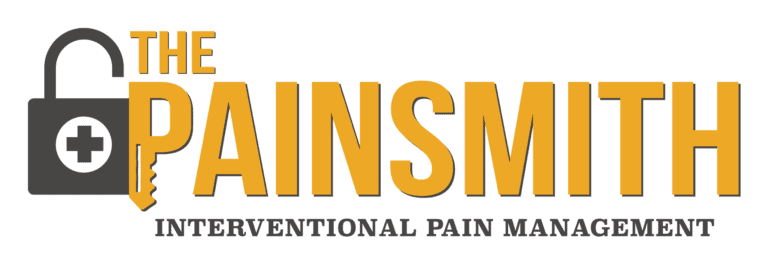Dr. Zack Smith is offering Stellate Ganglion Block (SGB) therapy for people diagnosed with Post Traumatic Stress Disorder (PTSD) at The PainSmith office in San Antonio. Unlike a psychotherapy-based approach to overcoming PTSD, a stellate ganglion block involves the injection of a long-acting local anesthetic into a cluster of nerves that can trigger a person’s “fight or flight” response (the sympathetic nervous system). It is believed that this allows those parts of the brain to completely reset, resulting in long-term relief of the anxiety symptoms associated with PTSD.
Potential Candidates for SGB Therapy may include:
- veterans and active military personnel, police, and other first responders
- grieving or bereaved people
- victims of childhood trauma or abuse
- victims of sexual assault or abuse
- victims of domestic abuse
- victims of car accidents, violent attacks, and other traumatic injuries
- victims of other traumas – physical and/or emotional
Table of Contents
Contact us today to schedule a consultation at our office, or keep reading to find out more about stellate ganglion blocks as a treatment option for people struggling with PTSD.
What is the stellate ganglion?
The stellate ganglion is a bundle of nerves found at the level of the sixth and seventh cervical vertebrae (the last vertebra of the neck) and is part of the sympathetic nervous system (SNS). The SNS prepares the body to react to stressful situations, which includes regulating heart rate, blood pressure, pupil dilatation, sweating and digestion, etc. It also organizes, processes, and sends messages from the brain to the rest of the body in response to stress, known as the “fight or flight response”. In certain conditions, like PTSD, the sympathetic system can become overactive, resulting in abnormal and unwanted effects such as irritability and sleep disturbances. Sympathetic overactivity can lead to pain conditions that affect the neck, head, chest, and arms, such as complex regional pain syndrome (CRPS), phantom limb pain, post-herpetic neuralgia (post-shingles pain), and painful vessel spasms that are seen in angina and Raynaud’s disease.
What is a Stellate Ganglion Block?
A stellate ganglion block is a minimally invasive, outpatient procedure used to treat a multitude of chronic pain syndromes in the face, head, neck, arm and chest. During this procedure, a small amount of pain-relieving medication (usually a combination of a local anesthetic and steroid) is injected into the part of the neck where the stellate ganglion lies. Because this bundle of nerves functions as a two-way conduit, connecting the parts of the brain that control the fight or flight response to the rest of the body, the goal of a stellate ganglion block is to “interrupt” or “block” the signals of the sympathetic nervous system from getting to the brain, in hopes of reducing or eliminating pain.
A sympathetic nerve block can be considered both a diagnostic and therapeutic procedure. If pain is substantially improved after the initial injection, then a diagnosis of sympathetic nerve pain can be established. Additional, “therapeutic” blocks may be repeated as the pain continues to sequentially diminish.
What are stellate ganglion blocks used for?
Stellate Ganglion Blocks have been used for years to help treat a variety of circulation and pain conditions, such as complex regional pain syndrome and peripheral artery disease. Other conditions that may be treated with SGB are:
- Complex regional pain syndrome type I (formerly known as reflex sympathetic dystrophy) or type II (formerly known as causalgia).
- Peripheral vascular (artery) disease.
- Phantom limb pain.
- Postherpetic neuralgia.
- Chronic post-surgical pain.
- Hyperhidrosis.
- Raynaud’s syndrome.
- Scleroderma.
- Cluster headaches.
- Orofacial pain (pain perceived in your face and/or mouth).
- Atypical chest pain.
- Ménière’s disease.
- Intractable angina.
- Refractory cardiac arrhythmias.

Stellate ganglion block for PTSD and other mental health conditions
Posttraumatic stress disorder (PTSD) is the third most common psychiatric diagnosis among Veterans seen in the Veterans Health Administration (VHA). PTSD can be debilitating, leading to a decline in quality of life and causing significant medical, mental health, interpersonal, and social impairment. First-line treatments for PTSD include psychotherapy and pharmacotherapy, or a combination of the two. However, many patients do not respond to these therapies. Stellate ganglion blocks (SGB), also called cervical sympathetic blocks, are emerging as an alternative for individuals with PTSD who have not fully responded to conventional therapies. Stellate ganglion blocks (SGB) have been a routine procedure in Pain Medicine since the early 1940s. It has been used to suppress sympathetic impulses and treat complex neurological disorders like complex regional pain syndrome (CRPS). A study in 1990 reported that use of the Stellate Ganglion Block (SGB) technique lead to a reduction in PTSD symptoms in patients experiencing both CRPS and PTSD.
The benefits of SGB for PTSD include:
- Destigmatization of treatment by offering a biologic approach to PTSD management
- Speed of treatment with improvements reported within minutes to days of the procedure
- Increased compliance as it does not require continuous daily or weekly administration
This procedure was expressly used to treat PTSD for the first time in 2008. Since then, many studies, including multicenter randomized controlled trials have demonstrated an improvement in PTSD symptoms with the use of this therapy. Researchers think the reason SGBs may help PTSD is due to a decrease in nerve growth factor levels. This reduces the norepinephrine levels and increased sympathetic nervous system activity that happens with PTSD. More recently, researchers have been studying the use of SGBs for other mental health conditions, including depression, anxiety and psychosis.
What happens during a stellate ganglion block injection?
A stellate ganglion block injection can be performed in our office. The entire process including check-in, preparation, procedure and recovery takes about 1 to 1½ hours. (The injection itself typically only takes around 5 minutes, but the additional time is necessary to ensure a safe and effective procedure.)
First, the skin over the area to be injected will be cleaned. Then a local anesthetic is injected into the treatment area to numb it. A small needle will be inserted near the stellate ganglion, using x-ray guidance to ensure proper placement and positioning of the needle. Contrast dye may also be injected (unless the patient has allergies to iodine) to confirm that the needle is in the proper location. Once this occurs, the medication (usually a combination mixture of a steroid and local anesthetic) will be slowly injected. The needle is then removed and a sterile dressing is applied. The patient will be taken to the recovery area, and will be released to go home after a brief observation period.
How successful are stellate ganglion blocks?
Many patients report pain relief immediately after the injection, but it typically returns a few hours later when the local anesthetic wears off (the longer-lasting pain relief will occur once the steroid takes effect). There may be some minor irritation at the injection site, but this will usually go away by the following day.
Many patients will require a series of three or more injections, over several weeks or months, before they benefit from the full effects of this type of therapy. This is why, if after the first injection, pain relief only lasts a day or two, that does not mean the treatment was a failure, but rather it indicates that multiple injections will likely extend the relief as there is a cumulative benefit to this type of treatment. Typically, with each injection, there is a progressive lessening of symptoms and the duration of relief increases. When the series is completed, anywhere from 3 to 12 months of pain relief may have been achieved.
To further improve results, the stellate ganglion block injections may be followed up with further neuroablative procedures or spinal cord stimulator implant surgery in future. In some cases, other treatments, such as radiofrequency ablation can be applied to the stellate ganglion to extend the pain relief.
Is a stellate ganglion block right for you?
If you are suffering from PTSD that hasn’t responded well to other treatments, please reach out to The PainSmith. After a physical evaluation and medical history, Dr. Smith will be able to determine if your pain is related to the sympathetic nerves and if a stellate ganglion block can help. To book your appointment, please call (210) 963-7493 or Request an Appointment. We look forward to helping you Unlock a Life with Less Pain.
